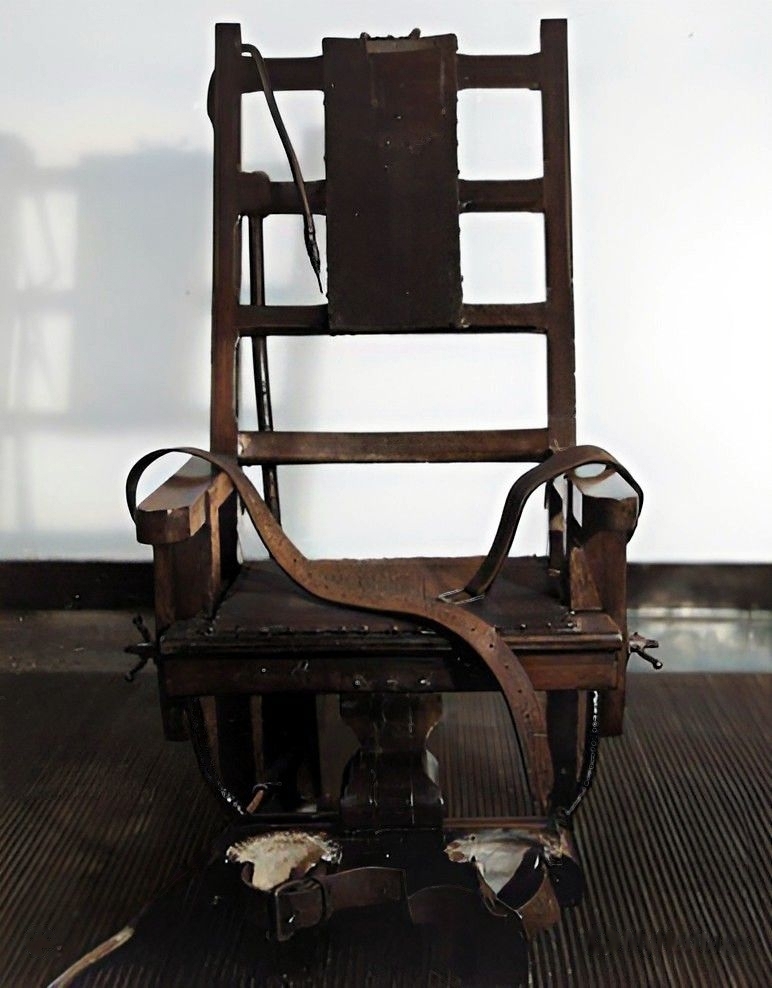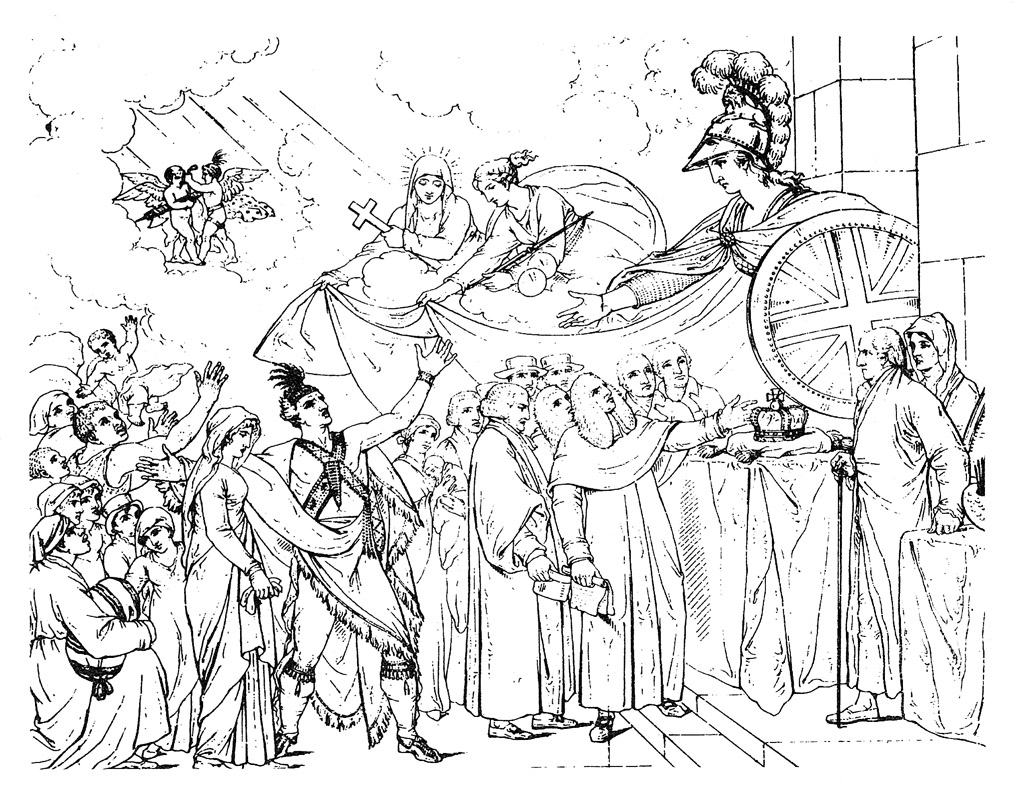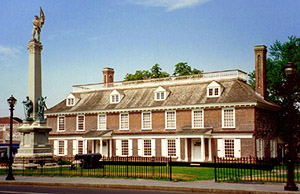|
Ossining, New York
Ossining ( ) is a town located along the Hudson River in Westchester County, New York. The population was 40,061 at the time of the 2020 census. It contains two villages, the Village of Ossining and part of Briarcliff Manor, the rest of which is located in the Town of Mount Pleasant. Ossining is the location of Sing Sing maximum-security prison. Geography According to the United States Census Bureau, the town has a total area of , of which is land and (26.43%) is water. Ossining is bounded on the west by the Hudson River and on the north by the Croton River. History In 1685, Frederick Philipse bought the area which presently constitutes the Town of Ossining from the Sint Sinck, a Munsee-speaking Lenape people. His Manor extended from Spuyten Duyvil Creek on the border between present-day Manhattan and the Bronx to the Croton River. The last Lord of the Manor, Frederick Philipse III, was a Loyalist in the American Revolutionary War who fled to England. The State of ... [...More Info...] [...Related Items...] OR: [Wikipedia] [Google] [Baidu] |
Administrative Divisions Of New York
The administrative divisions of New York are the various units of government that provide local government, local services in the American New York (state), state of New York. The state is divided into boroughs of New York City, boroughs, counties, cities, towns, and villages. (The only boroughs, the five boroughs of New York City, have the same boundaries as their respective counties.) They are municipal corporations, chartered (created) by the New York State Legislature, as under the Constitution of New York, New York State Constitution the only body that can create governmental units is the state. All of them have their own governments, sometimes with no paid employees, that provide local services. Centers of population that are not incorporated and have no government or local services are designated Administrative divisions of New York (state)#Hamlet, hamlets. Whether a municipality is defined as a borough, city, town, or village is determined not by population or land are ... [...More Info...] [...Related Items...] OR: [Wikipedia] [Google] [Baidu] |
Ossining (village), New York
Ossining ( ) is a Political subdivisions of New York State#Village, village in Westchester County, New York, Westchester County, New York (state), New York, United States. The population at the 2020 United States census was 27,551, an increase from 25,060 at the 2010 United States census, 2010 census. As a village, it is located in the political subdivisions of New York State#Town, town of Ossining (town), New York, Ossining. Geography Ossining borders the eastern shores of the widest part of the Hudson River, the Tappan Zee. According to the United States Census Bureau, the village has a total area of , of which is land and (49.37%) is water. Demographics As of the 2010 United States Census, there were 25,060 people living in the village. The racial makeup of the village was 61.8% White, 15.6% Black, 0.1% Native American, 4.2% Asian, <0.1% Pacific Islander, 0.4% from some other race and 1.3% from two or more races. 41.4% were Hispanic or Latino of any race. According to ... [...More Info...] [...Related Items...] OR: [Wikipedia] [Google] [Baidu] |
Sing Sing Correctional Facility
Sing Sing Correctional Facility is a maximum-security prison for men operated by the New York State Department of Corrections and Community Supervision in the village of Ossining, New York, United States. It is about north of Midtown Manhattan on the east bank of the Hudson River. It holds about 1,700 inmates as of 2007, and housed the execution chamber for the State of New York for a period, with the final execution there occurring in 1963; instead Green Haven Correctional Facility had the execution chamber by the late 20th Century, before the total abolition of capital punishment in New York in 2007. The name "Sing Sing" derives from the Sintsink Native American tribe from whom the New York colony purchased the land in 1685, and was formerly the name of the village. In 1970, the prison's name was changed to Ossining Correctional Facility, but it reverted to its original name in 1985. There are plans to convert the original 1825 cell block into a period museum.Village looks ... [...More Info...] [...Related Items...] OR: [Wikipedia] [Google] [Baidu] |
American Revolutionary War
The American Revolutionary War (April 19, 1775 – September 3, 1783), also known as the Revolutionary War or American War of Independence, was the armed conflict that comprised the final eight years of the broader American Revolution, in which American Patriot (American Revolution), Patriot forces organized as the Continental Army and commanded by George Washington defeated the British Army during the American Revolutionary War, British Army. The conflict was fought in North America, the Caribbean, and the Atlantic Ocean. The war's outcome seemed uncertain for most of the war. However, Washington and the Continental Army's decisive victory in the Siege of Yorktown in 1781 led King George III and the Kingdom of Great Britain to negotiate an end to the war in the Treaty of Paris (1783), Treaty of Paris two years later, in 1783, in which the British monarchy acknowledged the independence of the Thirteen Colonies, leading to the establishment of the United States as an independent and ... [...More Info...] [...Related Items...] OR: [Wikipedia] [Google] [Baidu] |
Loyalist (American Revolution)
Loyalists were refugee colonists from Thirteen Colonies, thirteen of the 20 British American colonies who remained loyal to the British Crown, British crown during the American Revolution, often referred to as Tories, Royalists, or King's Men at the time. They were opposed by the Patriot (American Revolution), Patriots or Whigs, who supported the revolution and considered them "persons inimical to the liberties of America." Prominent Loyalists repeatedly assured the Government of the United Kingdom, British government that many thousands of them would spring to arms and fight for the Crown. The British government acted in expectation of that, especially during the Southern theater of the American Revolutionary War, Southern campaigns of 1780 and 1781. Britain was able to effectively protect the people only in areas where they had military control, thus the number of military Loyalists was significantly lower than what had been expected. Loyalists were often under suspicion of t ... [...More Info...] [...Related Items...] OR: [Wikipedia] [Google] [Baidu] |
Frederick Philipse III
Frederick Philipse III (September 20, 1720 – April 30, 1785) was the third and last Lord of Philipsburg Manor, a hereditary estate in lower Westchester County, New York, and a Loyalist during the Revolutionary War. Early life Frederick Philipse III was the son of Frederick Philipse II (1698–1751), 2nd Lord of Philipsburg Manor, and Johanna Brockholst.Purple, Edwin R., "Contributions to the History of the Ancient Families of New York: Varleth-Varlet-Varleet-Verlet-Verleth," New York Genealogical and Biographical Record, vol. 9 (1878), pp. 120-12 FREDERICK PHILIPSE, born Sept. 12, bap. Sept. 14, 1720. The sponsors at his baptism were Adolphe Philipse and Susanna Brokholls. From Sabine's Loyalists, we learn that though holding an elevated position in Colonial society, he was not a prominent actor in public affairs; He was, however, a member of the Assembly and Colonel in the militia. On account of his loyalty to the British crown during the war of the Revolution, his estate, ... [...More Info...] [...Related Items...] OR: [Wikipedia] [Google] [Baidu] |
Bronx
The Bronx ( ) is the northernmost of the five Boroughs of New York City, boroughs of New York City, coextensive with Bronx County, in the U.S. state of New York (state), New York. It shares a land border with Westchester County, New York, Westchester County to its north; to its south and west, the New York City borough of Manhattan is across the Harlem River; and to its south and east is the borough of Queens, across the East River. The Bronx, the only New York City borough not primarily located on an island, has a land area of and a population of 1,472,654 at the 2020 United States census, 2020 census. It has the fourth-largest area, fourth-highest population, and third-highest population density of the boroughs.New York State Department of Health''Population, Land Area, and Population Density by County, New York State – 2010'' retrieved on August 8, 2015. The Bronx is divided by the Bronx River into a hillier section in the West Bronx, west, and a flatter East Bronx, easte ... [...More Info...] [...Related Items...] OR: [Wikipedia] [Google] [Baidu] |
Manhattan
Manhattan ( ) is the most densely populated and geographically smallest of the Boroughs of New York City, five boroughs of New York City. Coextensive with New York County, Manhattan is the County statistics of the United States#Smallest, largest, and average area per state and territory, smallest county by area in the U.S. state of New York (state), New York. Located almost entirely on Manhattan Island near the southern tip of the state, Manhattan constitutes the center of the Northeast megalopolis and the urban core of the New York metropolitan area. Manhattan serves as New York City's Economy of New York City, economic and Government of New York City, administrative center and has been described as the cultural, financial, Media in New York City, media, and show business, entertainment capital of the world. Present-day Manhattan was originally part of Lenape territory. European settlement began with the establishment of a trading post by Dutch colonization of the Americas, D ... [...More Info...] [...Related Items...] OR: [Wikipedia] [Google] [Baidu] |
Philipsburg Manor
Philipsburg Manor (sometimes referred to as Philipse Manor) was a manor located north of New York City in Westchester County in the Province of New York. Dutch-born Frederick Philipse I and two partners made the initial purchase of land that had been part of a Dutch patroonship owned by Adriaen van der Donck. Philipse subsequently bought his partners out and added more land before being granted a royal charter in 1693 for the estate, becoming its first lord. After his death, the manor was split between his son and grandson, both of whom continued its development. Among the family's numerous enterprises, the Philipses engaged in the slave trade, using their own slaves to construct most of the buildings on the Philipsburg property. The tenant farmers on the manor represented a diverse population of Europeans. The manor's property was confiscated during the American Revolution when Loyalist Frederick Philipse III, its third and final lord, was attainted for treason by N ... [...More Info...] [...Related Items...] OR: [Wikipedia] [Google] [Baidu] |
Sinsink
The Wappinger ( ) were an Eastern Algonquian Munsee-speaking Native American people from what is now southern New York and western Connecticut. At the time of first contact in the 17th century they were primarily based in what is now Dutchess County, New York, but their territory included the east bank of the Hudson in what became both Putnam and Westchester counties south to the western Bronx and northern Manhattan Island. To the east they reached to the Connecticut River Valley, and to the north the Roeliff Jansen Kill in southernmost Columbia County, New York, marked the end of their territory. Their nearest allies were the Mohican to the north, the Montaukett to the southeast on Long Island, and the remaining New England tribes to the east. Like the Lenape, the Wappinger were highly decentralized as a people. They formed numerous loosely associated bands that had established geographic territories. The Wequaesgeek, a Wappinger people living along the lower Hudson Ri ... [...More Info...] [...Related Items...] OR: [Wikipedia] [Google] [Baidu] |
Frederick Philipse
Frederick Philipse (born Frederick Flypsen;Appleton, W.S. ''The Heraldic Journal, Recording the Amorial Bearings and Genealogies of American Families'', Wiggen & Lunt, Boston, 1867 1626 in Bolsward, Netherlands – December 23, 1702), first Lord of the Manor of Philipsburg Manor, Philipseborough and patriarch of the Philipse family, was a Dutch immigrant to North America of Bohemian heritage.(William Jay, The Life of John Jay: with selection of his correspondence and miscellaneous papers. New York: J. & J Harper, 1833, p. 10). On his Bohemian aristocratic ancestry, see also: Thomas Capek, ''Ancestry of Frederick Philipse: First Lord and Founder of Philipse Manor at Yonkers, N. Y.'' New York: The Paebar Co., 1939. A slave trade merchant, he arrived in America as early as 1653. In 1662, he married Margaret Hardenbrook Philipse, Margaret Hardenbrook de Vries, a wealthy and driven widow. Together, and variously in league with slavers, pirates, and other undesirables alongside the p ... [...More Info...] [...Related Items...] OR: [Wikipedia] [Google] [Baidu] |
Croton River
The Croton River ( ) is a river in southern New York with a watershed area of , and three principal tributaries: the West Branch, Middle Branch, and East Branch. Their waters, all part of the New York City water supply system, join downstream from the Croton Falls Reservoir. Together, their waters and the reservoirs linked to them represent the northern half of the New York City water system's Croton Watershed. Shortly after the confluence of the three Croton River branches the Croton River proper flows westward into the Muscoot Reservoir, joined separately from the north by the Muscoot River, a tributary. The Muscoot empties into the New Croton Reservoir, which feeds the New Croton Aqueduct, supplying water to the Jerome Park Reservoir in the Bronx for distribution in New York City. Excess water leaves the spillway at the New Croton Dam and empties into the Hudson River at Croton-on-Hudson, New York at Croton Point, about north of New York City. History The ... [...More Info...] [...Related Items...] OR: [Wikipedia] [Google] [Baidu] |








